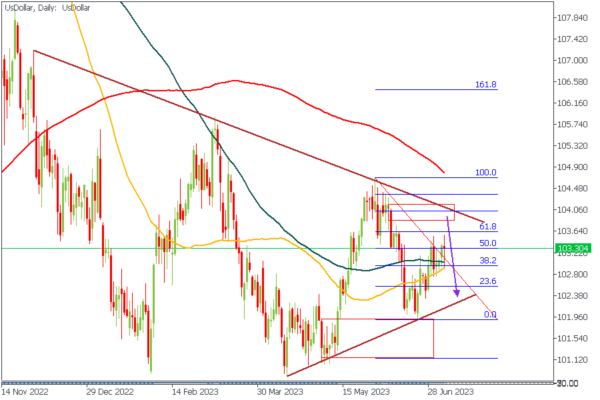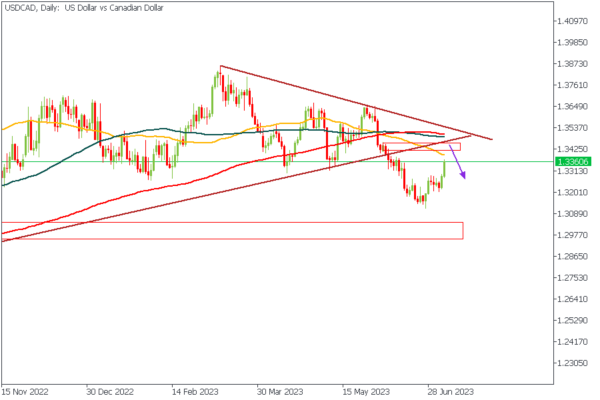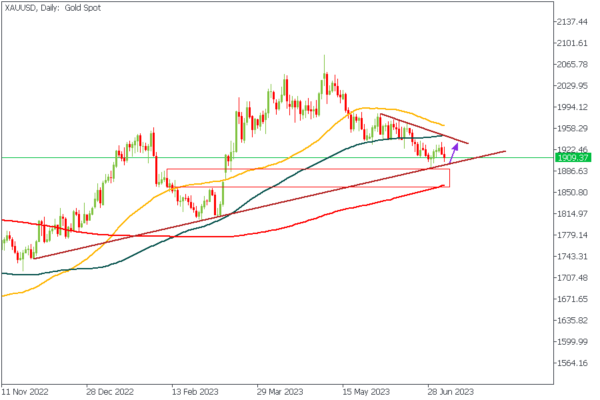Here’s the scoop: Businesses employ various strategies to soften economic conditions before resorting to mass layoffs. These measures include reducing job postings, hiring less, cutting temporary help, and reducing hours worked. Average weekly hours have decreased, potentially indicating a return to normal or a slackening labor market depending on future trends. Sectors such as retail trade, transportation and warehousing, and construction have experienced a decline in hours worked, making them more susceptible to job losses. Conversely, industries like education and health, where hours remain elevated, may show more resilience. While declining hours worked could suggest a weakening economy, it is important to consider the overall hiring landscape and employer enthusiasm for qualified workers. At the moment, financial analysts are predicting a weakening in the Dollar, but let’s see how the price action looks.
US DOLLAR – D1 Timeframe
Without much effort, it is pretty clear that the US Dollar is trading within a consolidation wedge pattern, with the most recent rejection having happened from the trendline support. This means we can expect the price reach for the resistance trendline to bounce off and resume its bearish momentum. Confluences for this include:
- The drop-base-drop supply zone.
- Bearish moving averages array.
- Resistance trendline.
- The Fibonacci retracement level.
Analyst’s Expectations:
- Direction: Bearish
- Target: 102.647
- Invalidation: 104.489
USDCAD – D1 Timeframe
With a weakening Dollar, I expect a bearish movement from commodities like USDCAD and USDJPY. This could be easily confirmed by reviewing the price action critically from a technical point of view to search out entry points. In the attached USDCAD chart, the area of confluence of the 50-day moving average, the resistance trendline, and the supply zone could be that sweet spot for an entry.
Analyst’s Expectations:
- Direction: Bearish
- Target: 1.32597
- Invalidation: 1.34645
XAUUSD – D1 Timeframe
XAUUSD (Gold) is often the go-to commodity for many traders due to its volatility, and we know that the NFP (Non-farm Payrolls) would only make the volatility even much more vibrant – so, exercise a bit of caution, eh? Nonetheless, the price action shows the price bouncing off the support trendline of a wedge consolidation pattern. Considering also that the moving averages are arranged in an ascending manner, plus the 200-day moving average support and the demand zone within the same region, I would be cashing in on a bullish continuation from that region.
Analyst’s Expectations:
- Direction: Bullish
- Target: 1933.16
- Invalidation: 1888.56
The trading of CFDs comes at a risk. Thus, to succeed, you have to manage risks properly. To avoid costly mistakes while you look to trade these opportunities, be sure to do your due diligence and manage your risk appropriately.















